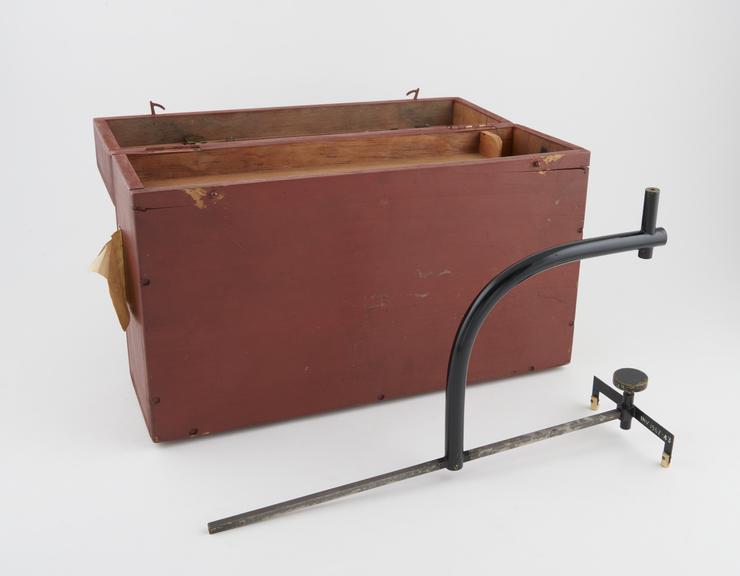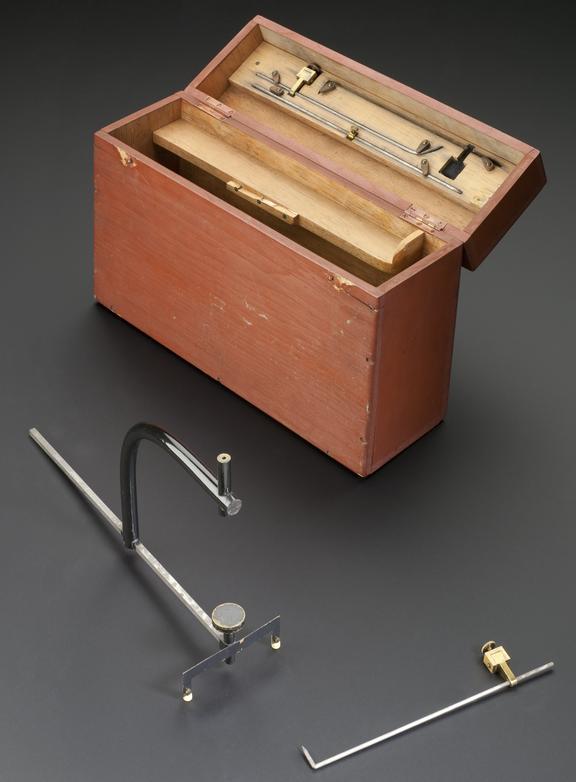





Craniometer, c. 1900
A craniometer was a measuring instrument used in craniology. This one was donated by University College London’s department of Statistical Science in 1967. Craniology studied the bones of the skull to group people according to intelligence, race and criminal temperament. During the 1800s, anthropological theories used craniology to explain human evolution and justify the colonisation of countries populated by ’less evolved’ peoples. These theories became less popular in the 1900s, but basic instruments like the craniometer were used in introductory statistics classrooms. Students measured the heads of classmates, calculated averages and standard deviations, and drew normal curves to represent the data. Those curves no longer carried profound social consequences.
Details
- Category:
- Psychology, Psychiatry & Anthropometry
- Object Number:
- 1967-43
- Materials:
- ash (wood), metal, brass (copper, zinc alloy) and steel
- Measurements:
-
overall: 230 mm x 340 mm x 110 mm, 1.51kg
- type:
- craniometer
- credit:
- University College London, Dept. of Statistical Science




